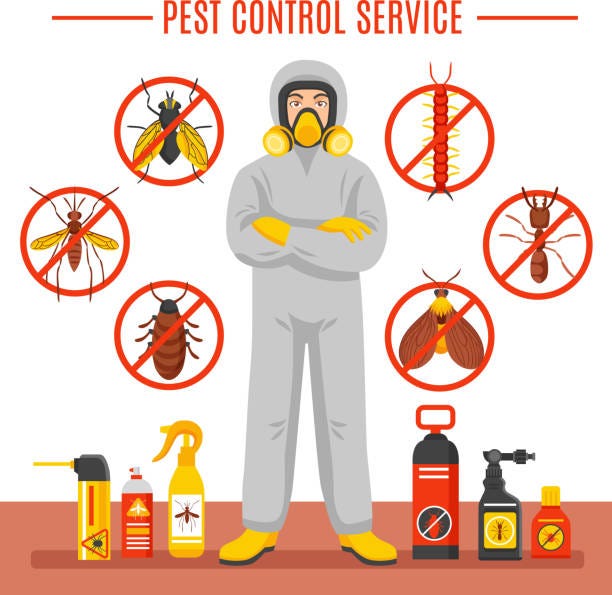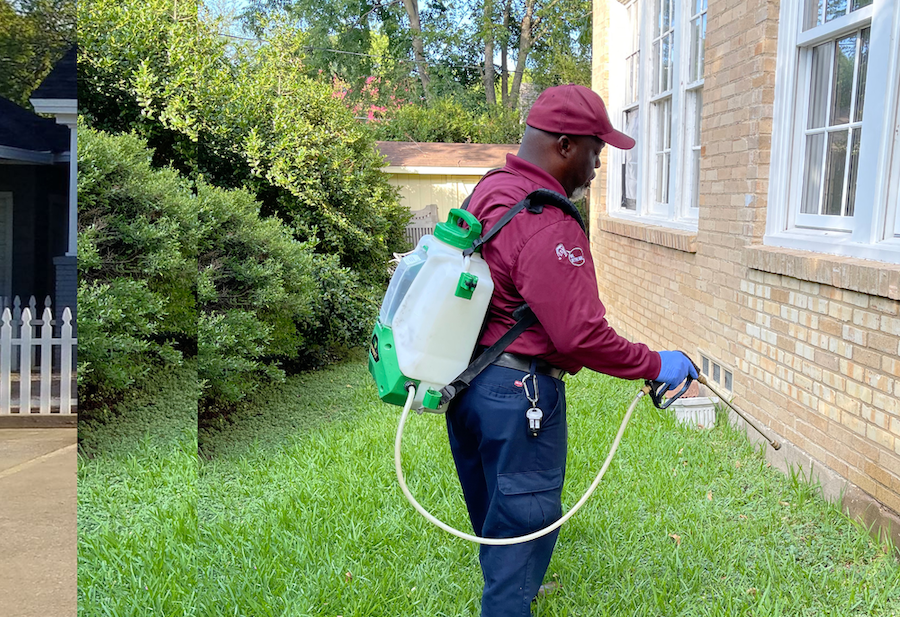Expert A1 Portland Bed Bug Exterminator - Get Rid of Bed Bugs Quick
Expert A1 Portland Bed Bug Exterminator - Get Rid of Bed Bugs Quick
Blog Article
Efficient Bug Control Solutions: A Thorough Consider Elimination Techniques and Avoidance Actions
In the realm of pest control services, the effective monitoring of problems requires a precise strategy that incorporates numerous techniques and measures for both elimination and prevention. From Integrated Bug Administration (IPM) methods that prioritize lasting services to chemical elimination methods developed for targeted elimination, the arsenal against insects is complex and huge. Organic control techniques and physical avoidance procedures supply alternate paths to efficiently combating unwanted burglars. Nevertheless, the key to a thorough parasite control plan exists not just in the methods themselves, but also in the thorough professional inspection procedures that precede and notify them. By recognizing the ins and outs of each approach and just how they interplay, one can absolutely grasp the intricacy and efficiency of contemporary bug control solutions.

Integrated Bug Administration (IPM) Approaches
Integrated Pest Management (IPM) Strategies encompass a thorough technique to pest control that focuses on prevention, tracking, and control methods to properly handle parasite populaces. By incorporating different strategies, IPM aims to lessen the impact of pests while additionally minimizing the dependence on chemical pesticides. Avoidance exists at the core of IPM, emphasizing methods like appropriate cleanliness, upkeep of hygiene, and sealing entrance points to prevent bugs from infesting structures.
Chemical Elimination Techniques
Chemical extermination methods are typically used in insect control solutions to efficiently eliminate pest populaces that position a hazard to human health and wellness and property. These methods include using various chemical materials especially made to target and remove pests such as insects, rodents, and other undesirable creatures. The application of pesticides, insecticides, rodenticides, and various other chemical representatives is very carefully managed to guarantee maximum performance while decreasing risks to humans, pets, and the environment.
One of the vital advantages of chemical extermination strategies is their capability to offer quick and targeted outcomes, making them especially useful in situations of extreme invasions or immediate insect control demands - a1 pest control in portland oregon bed bugs. Nevertheless, it is important to stress the relevance of correct handling, application, and disposal of these chemical items to stop unintentional damage
In addition, incorporated bug administration (IPM) approaches usually integrate chemical elimination techniques with other approaches such as sanitation, habitat alteration, and biological controls to develop a sustainable and thorough pest control approach. By integrating chemical extermination methods sensibly within an IPM structure, insect control services can effectively take care of bug populations while decreasing prospective dangers to human health and wellness and the environment.
Organic Parasite Control Methods
Using natural predators and parasites to handle parasite populaces is a sustainable method called biological bug control. This technique uses the all-natural mechanisms of the community to control insect populaces without relying upon synthetic chemicals. One common organic control method includes presenting natural adversaries of the target insect types, such as ladybugs for aphid control or nematodes for termite invasions. These natural predators eat the parasites, aiding to keep their populaces in check.
Another reliable organic control approach is the usage of microbial insecticides. These are normally occurring microorganisms, such as viruses, fungi, and microorganisms, that specifically target and infect certain bug types. By using these microbial representatives, parasite populations can be properly decreased without harming valuable organisms or causing injury to the setting.
Physical Insect Avoidance Steps
Carrying out physical bug prevention measures involves making use of barriers and architectural alterations to hinder bugs from going into or infesting a building. Installing door moves, displays on windows, and sealing fractures in the structure can aid prevent insects like pests and rats from gaining gain access to indoors.
An additional physical avoidance measure is the use of barriers like fence to maintain larger bugs such as raccoons or deer far from the building. Installing mesh or cord screens around yards can shield plants from being damaged by bugs. Appropriate waste administration, including protecting trash cans with tight-fitting covers, is necessary in hindering pests like rodents, raccoons, and pests. By implementing these physical parasite prevention measures, home proprietors can substantially reduce the threat of bug infestations and the damage they can create.
Expert Parasite Examination Treatments
Conducting methodical and complete parasite examinations is a basic aspect of professional insect administration methods. Specialist insect inspectors are trained to carefully check out buildings for signs of infestations, identifying pest types, entrance factors, and favorable conditions. The assessment process generally starts with a comprehensive analysis of both the interior and outside of the premises. This entails checking for bug droppings, nibble marks, nests, and any kind of structural damages that may a1 pest control portland bed bugs show pest activity. In addition, inspectors may make use of specialized tools such as dampness meters and borescopes to discover hidden invasions within wall surfaces or crawl spaces.

Verdict
In verdict, efficient insect control solutions use a range of techniques, including Integrated Parasite Administration strategies, chemical elimination methods, organic controls, and physical prevention actions. Professional parasite evaluation treatments play a critical function in recognizing and attending to pest problems in a timely way. By applying a combination of these techniques, homeowner can effectively protect against and manage bug problems.
From Integrated Insect Monitoring (IPM) strategies that prioritize lasting solutions to chemical extermination strategies developed for targeted elimination, the toolbox versus insects is huge and multifaceted.Integrated Insect Management (IPM) Approaches incorporate a detailed technique to pest control that focuses on surveillance, control, and avoidance methods to successfully take care of pest populaces.Chemical extermination methods are generally utilized in bug control solutions to effectively remove pest populaces that posture a threat to human health and wellness and residential property.Using natural killers and bloodsuckers to manage insect populations is a lasting technique known as biological parasite control.In verdict, effective parasite control services utilize a selection of techniques, including Integrated Insect Monitoring methods, chemical elimination approaches, organic controls, and physical prevention steps.
Report this page